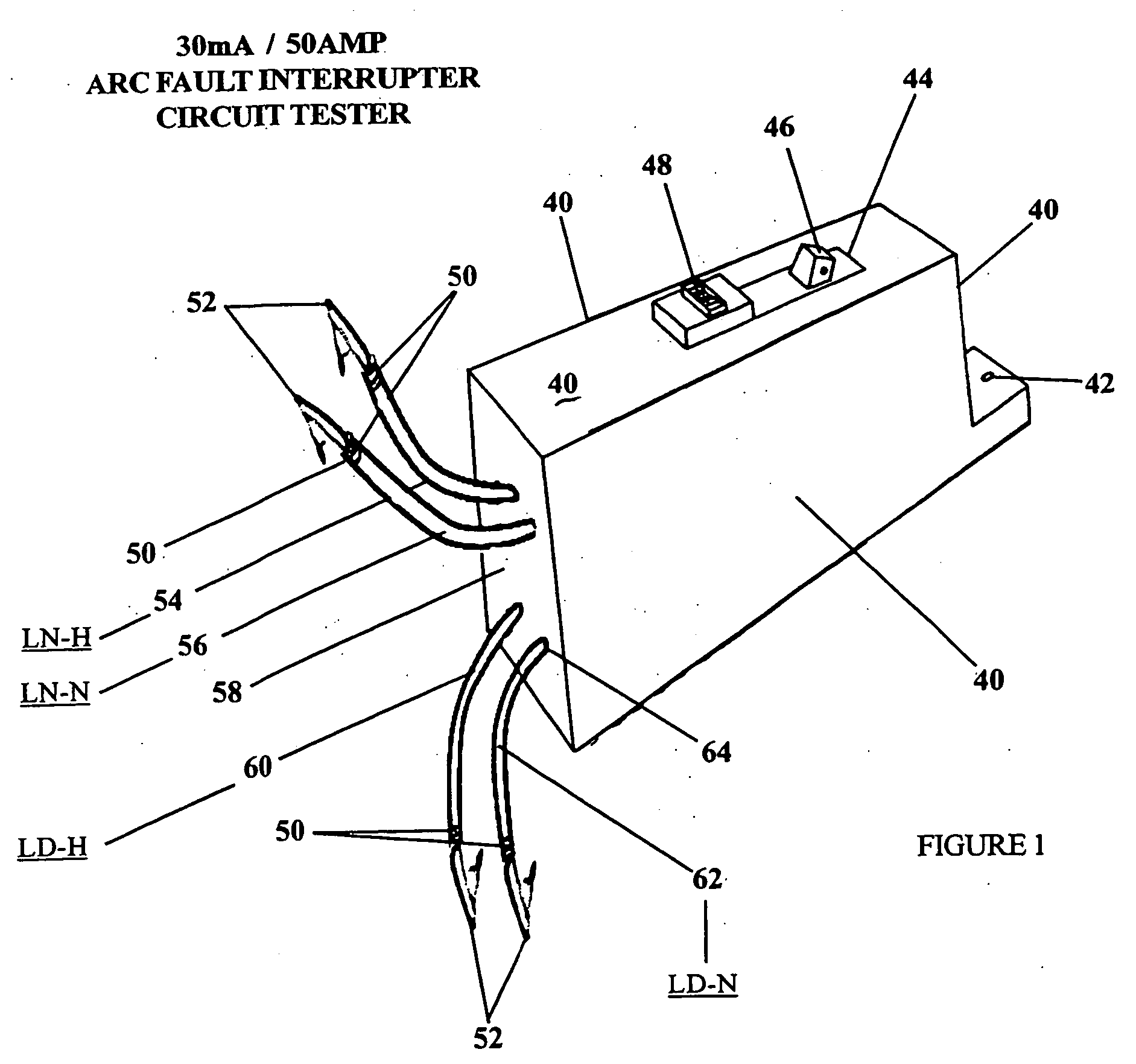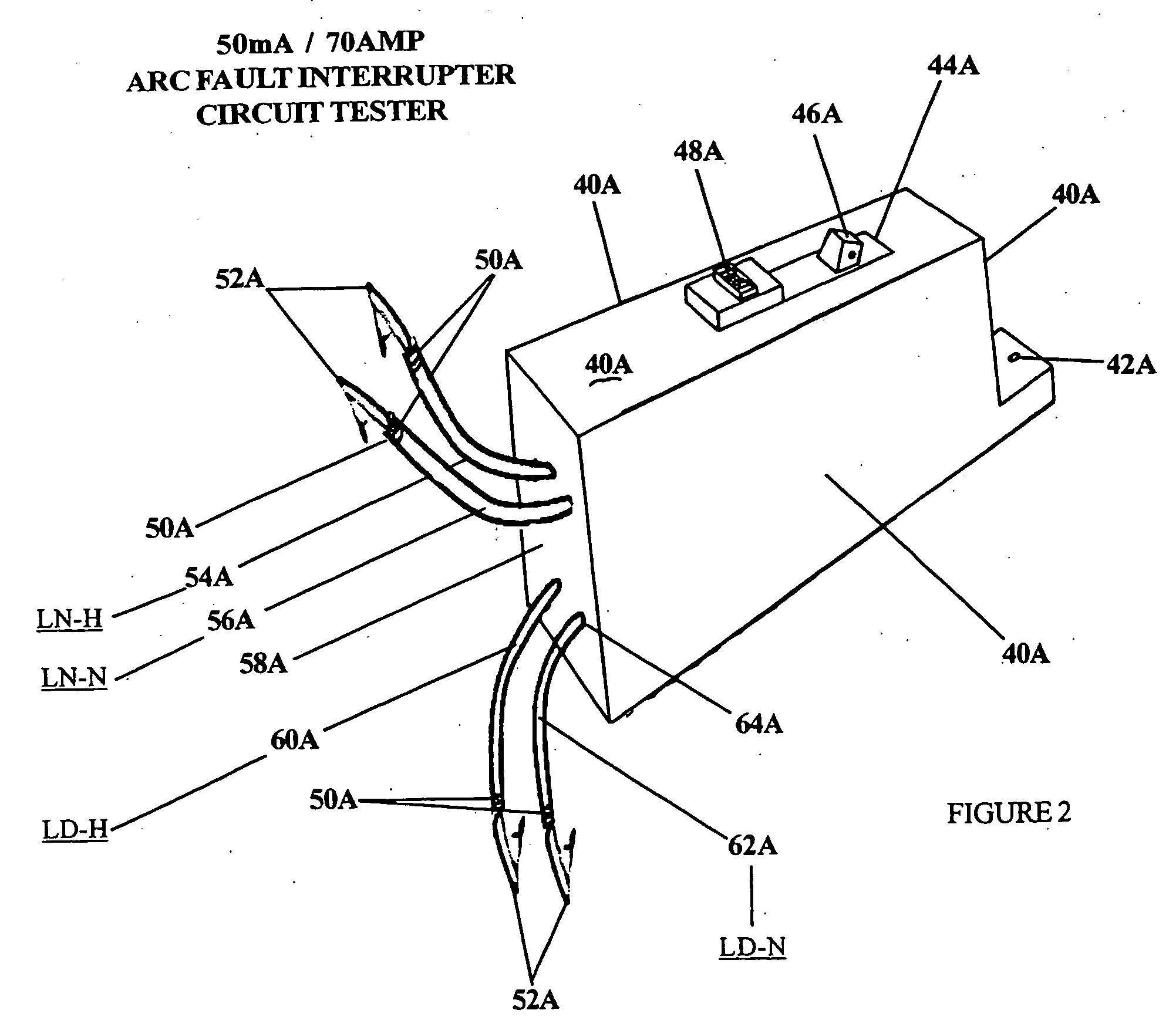Arc fault and ground fault circuit interrupter tester apparatus and method
a technology of ground fault and circuit interrupter, which is applied in the direction of testing circuits, emergency protective arrangements for limiting excess voltage/current, instruments, etc., can solve the problems of ground fault or arc fault current leakage, potential danger of fire and electrocution, and high cost of equipment and equipmen
- Summary
- Abstract
- Description
- Claims
- Application Information
AI Technical Summary
Benefits of technology
Problems solved by technology
Method used
Image
Examples
Embodiment Construction
[0152] Referring now to FIGS. 1-3, a method is shown for testing electrical circuits 116 (FIG. 22) by utilizing AFCI tester 40 (FIG. 1) or 40A (FIG. 2) to permanently test monitor whole house wiring systems and to provide the portability of diagnostic circuit testing for all existing electrical circuits 116 using AFCI testers 40, 40A, or 66 (FIG. 3). By the test methods shown in FIGS. 15-20, electrical wiring and appliances, no matter how old, can be tested for arc fault current leakage exceeding 50 amps using tester 40 (FIG. 1), arc fault current leakage greater than 70 amps using tester 40A (FIG. 2), ground fault current leakage greater than 30 mA using tester 40 (FIG. 1), and ground fault current leakage greater than 50 mA using tester 40A (FIG. 2).
[0153] Aging of installed wiring can cause a variety of different types of electrical problems. Many wire insulation exhibits cracking because of variations in humidity, dry climates, dust, sunlight, and extreme temperatures. Wire ins...
PUM
 Login to View More
Login to View More Abstract
Description
Claims
Application Information
 Login to View More
Login to View More - R&D
- Intellectual Property
- Life Sciences
- Materials
- Tech Scout
- Unparalleled Data Quality
- Higher Quality Content
- 60% Fewer Hallucinations
Browse by: Latest US Patents, China's latest patents, Technical Efficacy Thesaurus, Application Domain, Technology Topic, Popular Technical Reports.
© 2025 PatSnap. All rights reserved.Legal|Privacy policy|Modern Slavery Act Transparency Statement|Sitemap|About US| Contact US: help@patsnap.com



